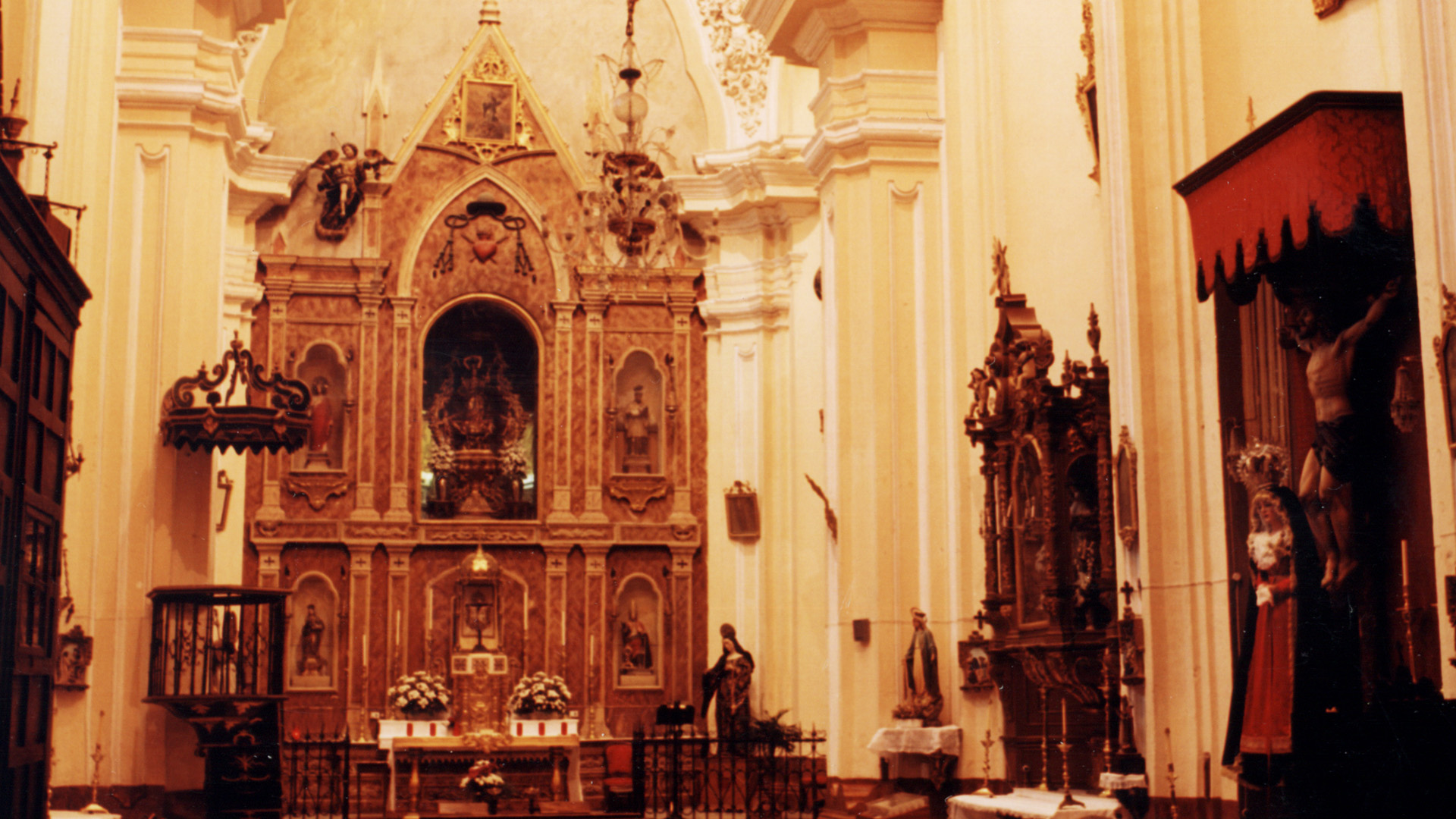Discover the Convent of Madre de Dios in Monteagudo.
It was built between 1747 and 1761, according to the project of the master builder Cristóbal García. The Augustinians founded a convent in 1520. Already in 1547 the old building began to be erected, which as a result of a fire had to be replaced by the current one. The exterior ship of this building surprises by the enormous height of its brick walls, highlighting two autonomous volumes: the tower-dome of the main chapel and the beautiful bell tower.
The volume of the tower-dome is an elegant work of the Baroque-Mudejar Antequera, they are tectonically articulated in wide panels based on vertical strips, blind arches, niches, quadrifoliate oculi, mixtilinear moldings … The whole complex is covered by an eight-water roof topped by a magnificent weather vane. The tower stands out for its grace, especially in the basement of the main body of bells, which narrows with respect to the upper bodies, giving a false impression of instability.

The interior of the church is one of the most beautiful creations of the Antequera Baroque, from the architectural point of view. Starting from a very simple model of convent church, it is possible to achieve, thanks to a skillful game of straights, curves, concave surfaces and despite its lack of ornamentation, a spatial set of the most original of all Spanish architecture. The nave of the temple is divided into four sections, separated by highly stylized Tuscan pilasters, on which they support trilobed arches.
What gives movement to the entire interior is the game of concave shelves and vaults arranged in complicated caps. Very interesting is the arrangement of the high and low choirs. The dome of the main chapel is possibly the most important and accomplished piece of the set. On four pendentives, decorated with shields, angels and motifs from the Rococo repertoire, sits a mixtilinear ring that gives way to a triple dome of very complex structure.
. In the main altarpiece of neo-Gothic style opens the vain of the dressing room, a small room that appears hanging on the outside. This space is presided over by the image of the Virgin of Monteagudo, a sculpture full of grace and movement, the work of José de Medina. The lamp angels executed in the last third of the eighteenth century are very beautiful. In the nave of the Gospel, at the foot next to the communion of the nuns, there is a kind of altarpiece formed by several glazed urns of different sizes, in which some sculptures of interest are kept: the group of Santa Ana teacher of the Virgin, the Virgin of Valvanera, San Agustín, etc.
Once past the section that corresponds to the street gate, we find the altarpiece of San Agustín, a work executed by José Medina in 1748. Very interesting are the silver attributes of the saint that are the work of the Granada silversmith Vicente Ruiz Velázquez. The next altarpiece of the nave, next to the main arch, is a small rococo machine of complex structure and work of Antequera workshop of the eighteenth century. In the first altarpiece of the nave of the Epistle, next to the main chapel, is the medium-sized sculpture of San José, probably the work of Carvajal. The next altar is occupied by the image of the Christ of Clean, modern crucified. Next to the choir is the altarpiece of the Virgen del Rosario, a beautiful image of the eighteenth century. The altarpiece itself, the best of those that exist in the church is from the late eighteenth century and probably the work of the sculptor Miguel Rodríguez Guerrero from Antequera.
Contact:
Address: Street Lucena, 41, Antequera, Málaga
Schedule: PERMANENTLY CLOSED
Phone: 952702505
